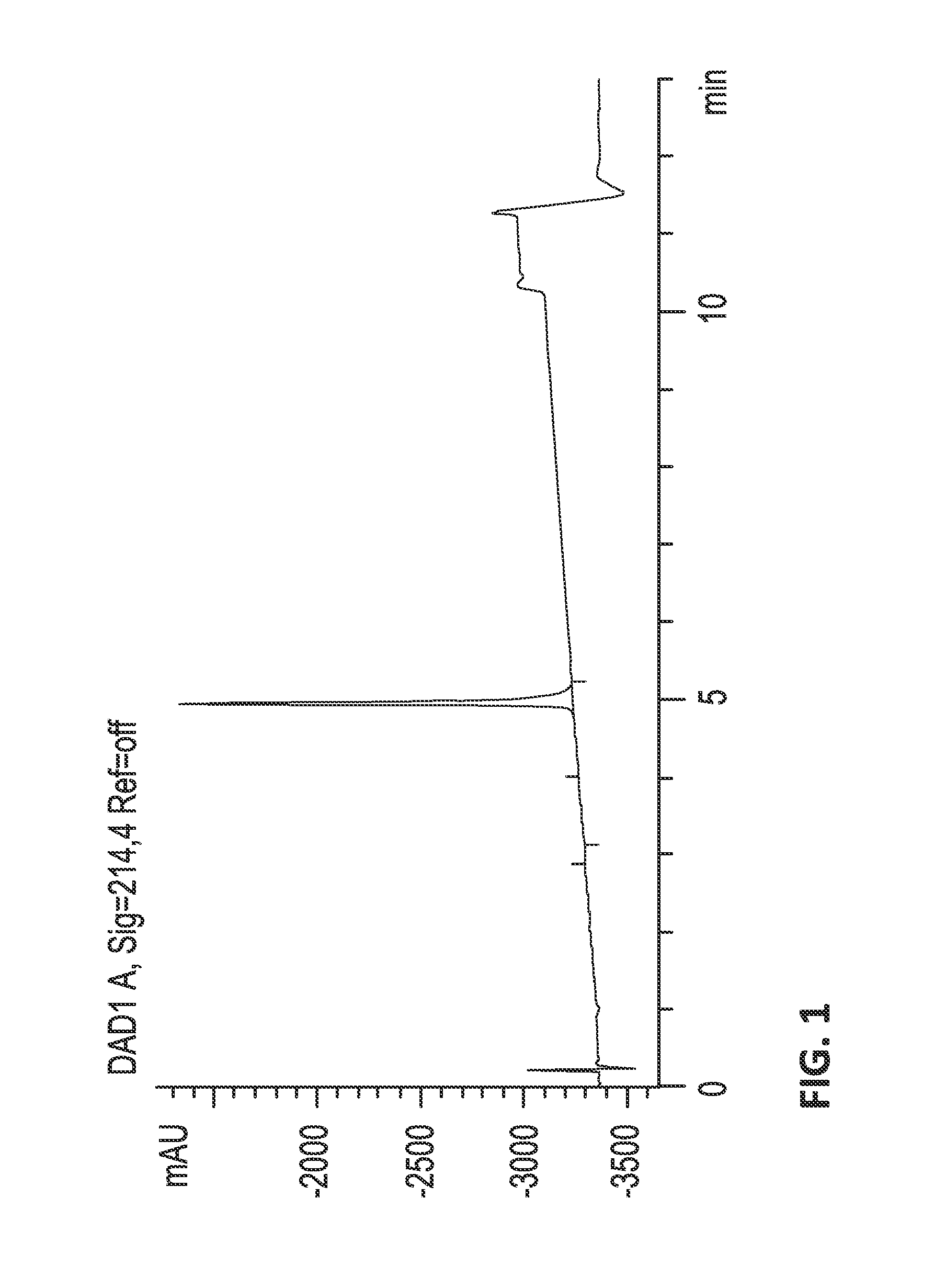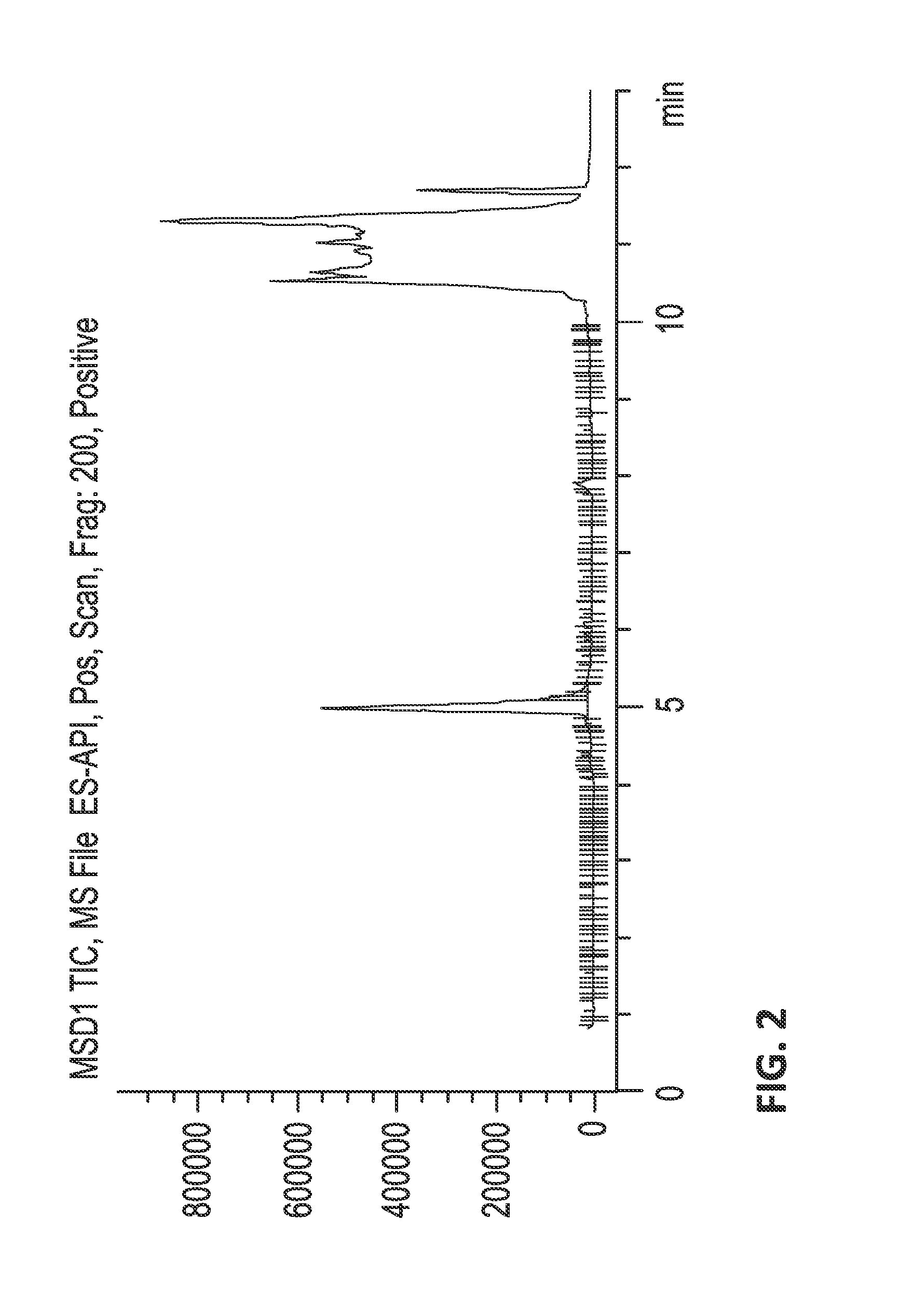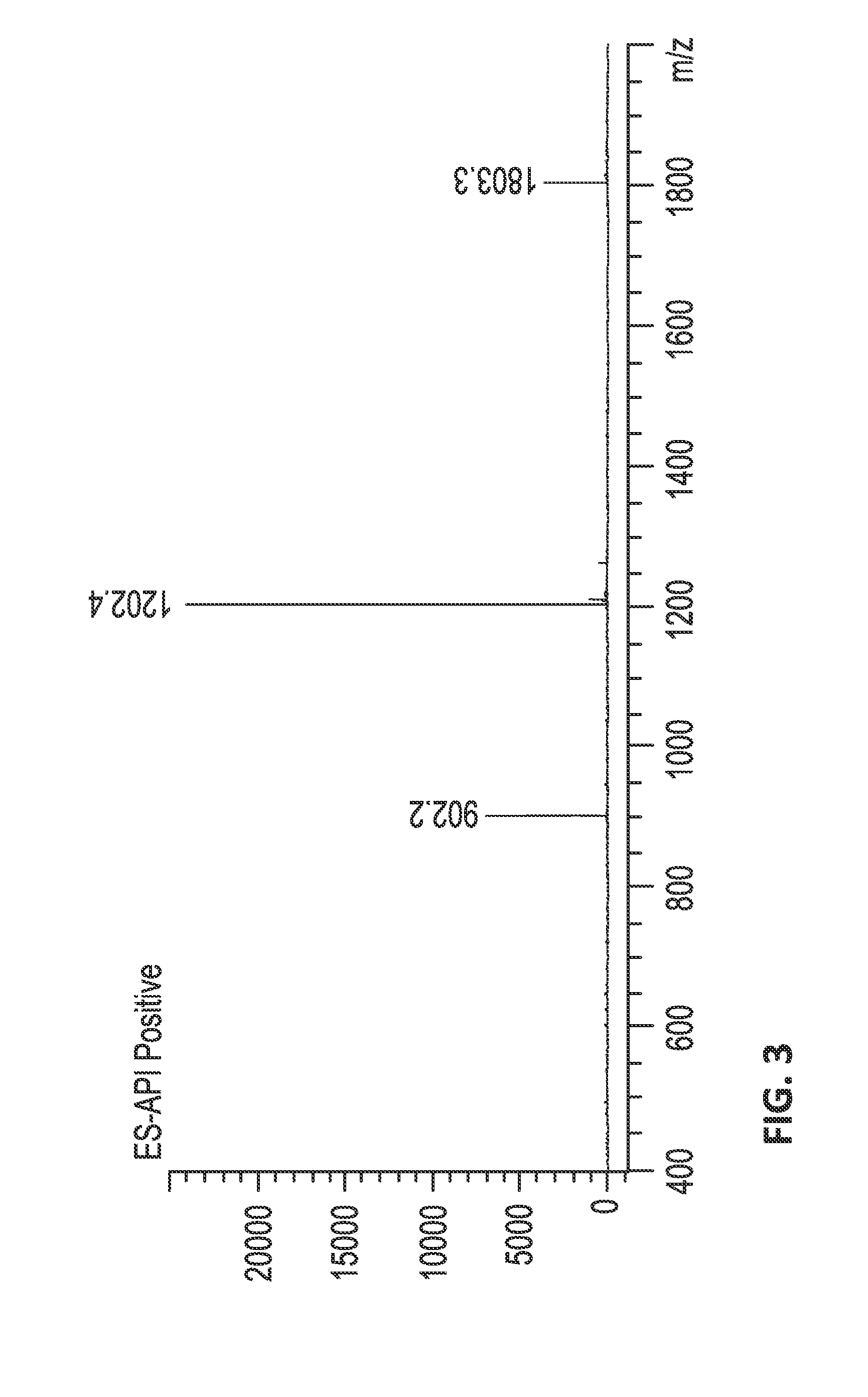Potent and selective inhibitors of nav1.7
a selective inhibitor and nav1.7 technology, applied in the field of biochemical arts, can solve the problems of complex process of production of toxin peptides, inability of otherwise healthy individuals to sense any form of pain, and inability to sense pain at any level, etc., and achieve the effect of high potency and selectivity
- Summary
- Abstract
- Description
- Claims
- Application Information
AI Technical Summary
Benefits of technology
Problems solved by technology
Method used
Image
Examples
example 1
Isolation and Purification of JzTx-V (SEQ ID NO:2) from Venom
[0660]Venom Sample Preparation.
[0661]Venom from the tarantula Chilobrachys jingzhao was extracted via electrical stimulation of an anesthetized spider. Venom samples were collected, lyophilized, and dissolved in 0.1% trifluoroacetic acid (TFA) in water to approximately 1 mg venom / mL. The crude venom solutions were desalted by solid-phase extraction (SPE) with Sep-Pak C18 cartridges (Waters, Milford, Mass., USA) equilibrated in 0.1% TFA, and eluted with 60% aqueous acetonitrile and then evaporated. The dried material was dissolved in 0.1% TFA to 1 mg venom / mL concentration and higher molecular components removed with a 10 kDa molecular weight cut-off Ultrafree-CL (Millipore). The <10 kDa venom extract was then dried under in vacuo and stored at −80° C.
[0662]Fractionation.
[0663]The crude venom was fractionated by reversed phase (RP) HPLC, collecting 84 samples in time slices. Less than 10 kDa venom extracts were dissolved in...
example 2
Synthesis of JzTx-V Peptide Analogs
[0669]Small-Scale Peptide Synthesis.
[0670]Peptides were assembled using Nα-Fmoc solid-phase peptide synthesis methodologies with appropriate orthogonal protection and resin linker strategies. The peptides were synthesized on a 0.012 mmol scale using Rink Amide MBHA resin (100-200 mesh, 1% DVB, RFR-1063-PI, 0.52 meq / g initial loading, 408291, Peptides International, Louisville, Ky.). Dry resin (17 mg per well) was added to a Phenomenex deep well protein precipitation plate (CEO-7565, 38710-1) using a resin loader (Radley) Amino acids were added to the growing peptide chain by stepwise addition using standard solid phase methods on an automated peptide synthesizer (Intavis Multipep). Amino acids (5 molar equivalents, 120 μL, 0.5 M in DMF) were pre-activated (1 min) with (1-Cyano-2-ethoxy-2-oxoethylidenaminooxy)dimethylamino-morpholino-carbenium hexafluorophosphate (COMU®; 5 molar equivalents, 170 μL, 0.35 M in dimethylformamide (DMF)) and N,N-Diisopr...
example 3
[0690]Cell Lines Expressing Nav Channels.
[0691]Stable cell lines constitutively expressing human (h) voltage-gated sodium (Nav) channels (CHO-hNav1.3, HEK293-hNav1.4, HEK293-hNav1.5, and HEK293-hNav1.7) or CHO cells expressing hNav1.8 under an inducible promoter were used for experiments.
[0692]Ion-Works® Quatro Population Patch Clamp Electrophysiology.
[0693]Adherent cells were isolated from tissue culture flasks using 0.25% trypsin-EDTA treatment for 10 minutes and were resuspended in external solution consisting of 140 mM NaCl, 5.0 mM KCl, 10 mM HEPES, 2 mM CaCl2, 1 mM MgCl2, 10 mM Glucose, pH 7.4. Internal solution consisted of 70 mM KCl, 70 mM KF, 10 HEPES, 5 mM EDTA, pH 7.3. Cells were voltage clamped, using the perforated patch clamp configuration at room temperature (−22° C.), to −110 mV and depolarized to −10 mV before and 5 min after test compound addition. Compound dilutions contained 0.1% bovine serum albumin to minimize non-specific binding. Peak inward c...
PUM
| Property | Measurement | Unit |
|---|---|---|
| molecular weight | aaaaa | aaaaa |
| voltage | aaaaa | aaaaa |
| voltage | aaaaa | aaaaa |
Abstract
Description
Claims
Application Information
 Login to View More
Login to View More - R&D
- Intellectual Property
- Life Sciences
- Materials
- Tech Scout
- Unparalleled Data Quality
- Higher Quality Content
- 60% Fewer Hallucinations
Browse by: Latest US Patents, China's latest patents, Technical Efficacy Thesaurus, Application Domain, Technology Topic, Popular Technical Reports.
© 2025 PatSnap. All rights reserved.Legal|Privacy policy|Modern Slavery Act Transparency Statement|Sitemap|About US| Contact US: help@patsnap.com



